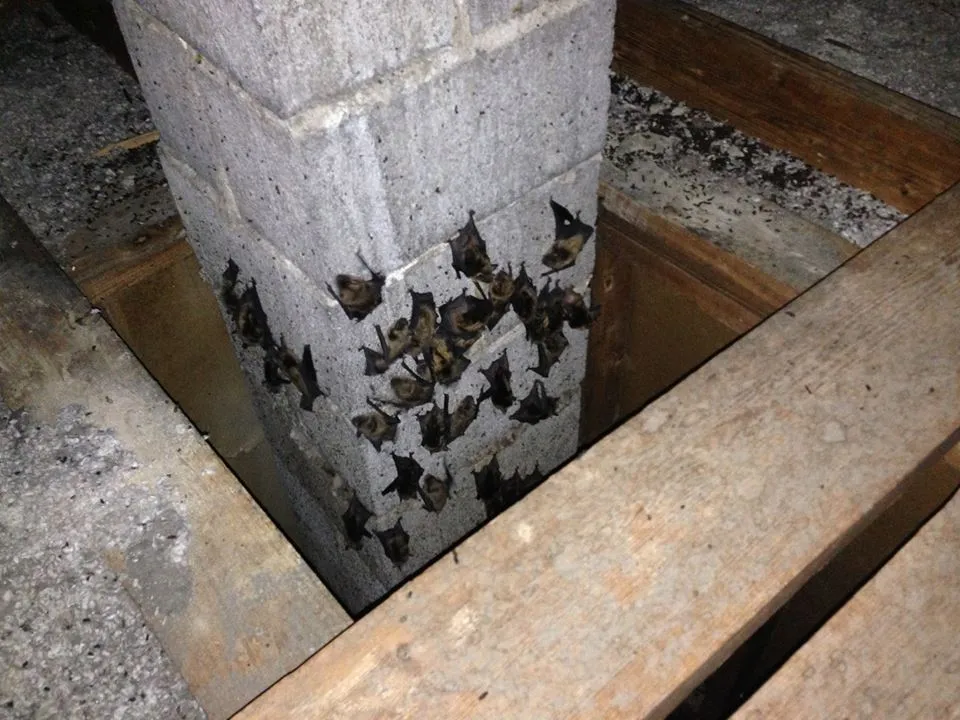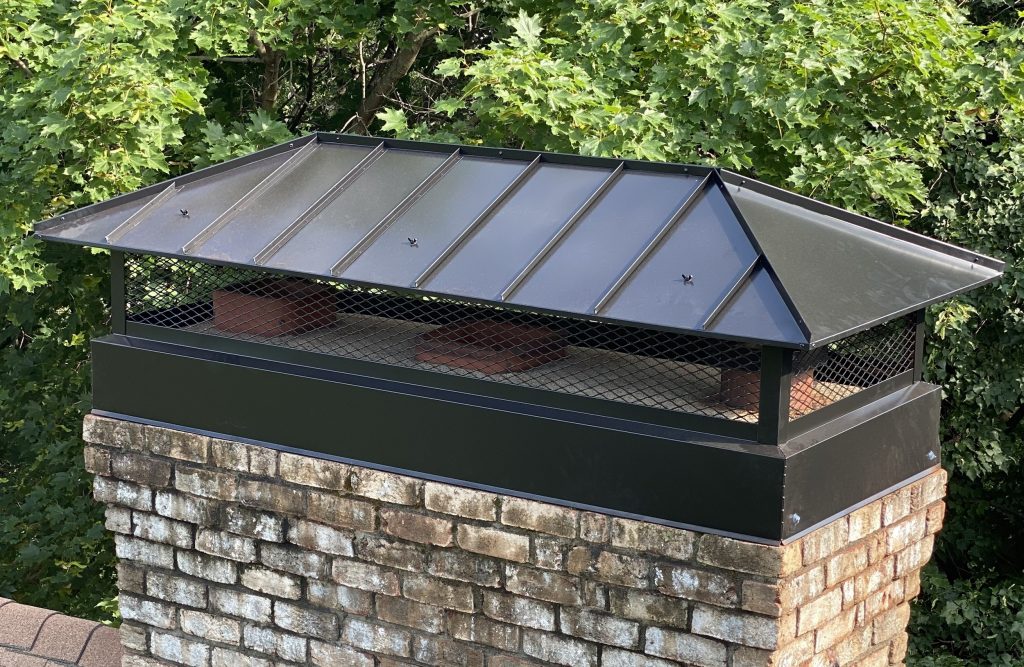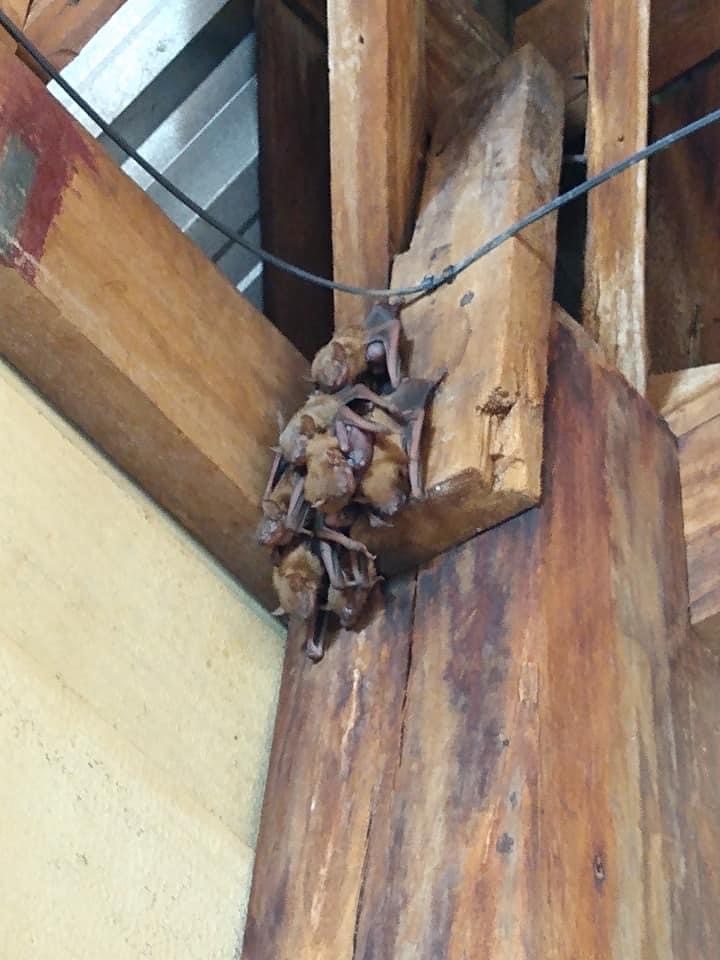Finding bats in the chimney is most likely to happen in the spring and summer. Females are seeking safe places to nest in order to give birth and raise their young. For the first few months, bat pups are unable to fly and are totally dependent on their mothers.
If you find bats in the chimney (or attic), do not handle them and do not trap them! Separating the mothers from the pups is cruel.
How to Tell Bats Are in the Chimney

If bats are roosting in a chimney, there are several common signs to look for:
- Chirping or Squeaking Noises – Bats are vocal, especially at dusk and dawn when they are most active. You may hear high-pitched squeaks or scratching sounds from inside the chimney.
- Guano (Bat Droppings) – Accumulations of small, dark, shiny droppings at the base of the chimney or on the roof are a clear sign of bat activity. Bat guano often crumbles easily and may contain insect parts.
- Stains or Grease Marks – Bats have oily fur that can leave dark, greasy smudges around the edges of chimney openings where they enter and exit.
- Ammonia-like odor – A strong, musty smell from guano and urine buildup is another key indicator.
- Sightings of Bats – If you see bats flying near the chimney at dusk or dawn, especially entering or exiting the structure, they are likely roosting inside.
- Unusual Drafts or Airflow – A noticeable change in airflow or odd drafts in the fireplace may be due to bats obstructing the chimney.
Why Do Bats Roost in Chimneys?
Chimneys provide easy access entry points for bats. These animals enter chimneys to hibernate and reproduce. Homeowners with a maternity colony of bats inside their chimneys may have a long-lasting problem on their hands. The animals have strong homing instincts and usually return to the same roosts. A bat can live for over six years, and females give birth to a litter of pups every season.
Issues with Bats in Chimneys
Wherever they roost, Bat droppings (guano) and urine accumulate. The build-up of guano on bricks and shingles leads to a musty odor and contaminated runoff during rainstorms. Bats in chimneys also create dark, oily stains similar to those left by rodents.
Any time bats live near humans, there is a definite risk of contracting rabies from a bite. Even a dead bat can spread the disease. In addition, airborne spores that develop within the pests’ droppings may transmit histoplasmosis to humans.
How to Get Bats Out of a Chimney
If you do have bats in the chimney, keep the flue shut! Not only is exclusion the most effective way to deter bats from roosting in your chimney, but it is also the most humane and ethical bat control strategy.
- Exclusion tubes – This device is a one-way exit, allowing bats in the chimney to leave but not to return.
- Mesh screens – Placing wire mesh over the top of the chimney keeps bats out, though it is important to avoid trapping any animals inside.
- Chimney caps – Similar to a mesh screen, a cap stops pest wildlife from entering.
Important caveat- you cannot install bat exclusion if baby bats are present. During summer months, colonies of bats roost in chimneys
How NOT to Get Rid of Bats in Chimneys
You cannot trap or exterminate bats. Bats play a vital role in the environment and contribute to the economy.
“Smoking out” a bat infestation is also a bad idea. The suggestion to keep the damper close and set a fire is not humane. After birth, bat pups cannot fly. If you set a fire with bat pups in your chimney, it will be cruel.
What to Do if You Have Bats
Installing a bat house is a simple project that encourages bats in chimneys to move out on their own.
Setting up some of these devices requires special knowledge and equipment. Accessing the chimney also means getting onto the roof, which can be dangerous for homeowners. For safe and effective wildlife management, call Critter Control when bats cause problems.



